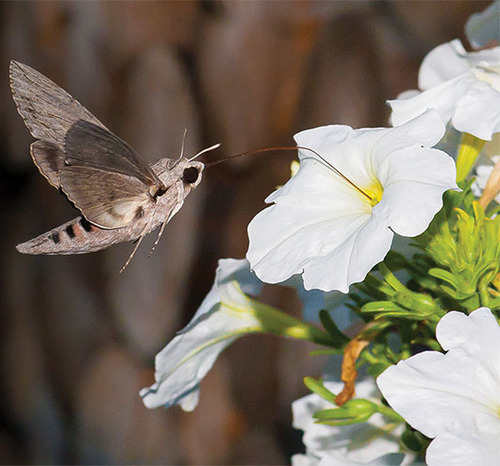- Joined
- Dec 3, 2017
- Messages
- 26,290
- Reaction score
- 16,771
- Gender
- Male
- Political Leaning
- Progressive

Science Magazine - In other journals
The white moon petunia, Petunia axillaris, has white flowers that absorb ultraviolet light and emit volatiles to attract the nocturnal hawkmoths that
A single gene determines whether petunia flowers are white and pollinated by night-flying hawkmoths, as shown here, or are pink and visited by day-flying bees.
The white moon petunia, Petunia axillaris, has white flowers that absorb ultraviolet light and emit volatiles to attract the nocturnal hawkmoths that pollinate them. Conversely, the related species Petunia secreta displays magenta-colored, ultraviolet light–reflecting flowers that are visited by bees during the daytime. Luthi et al. show that deleting a single gene that regulates the biosynthesis of UV-absorbing flavonol pigments in P. axillaris turns the flowers pink and UV-reflective and makes the flowers attractive to both social and solidary bees. Therefore, single genes can cause major phenotypic effects that contribute to adaptation and speciation of the organisms. —DJ
=======================================================
As an example of how evolution creates new species, mutation of a single gene that regulates production of flower pigments in plant flowers produces a new species that attracts very different pollinating insects,

